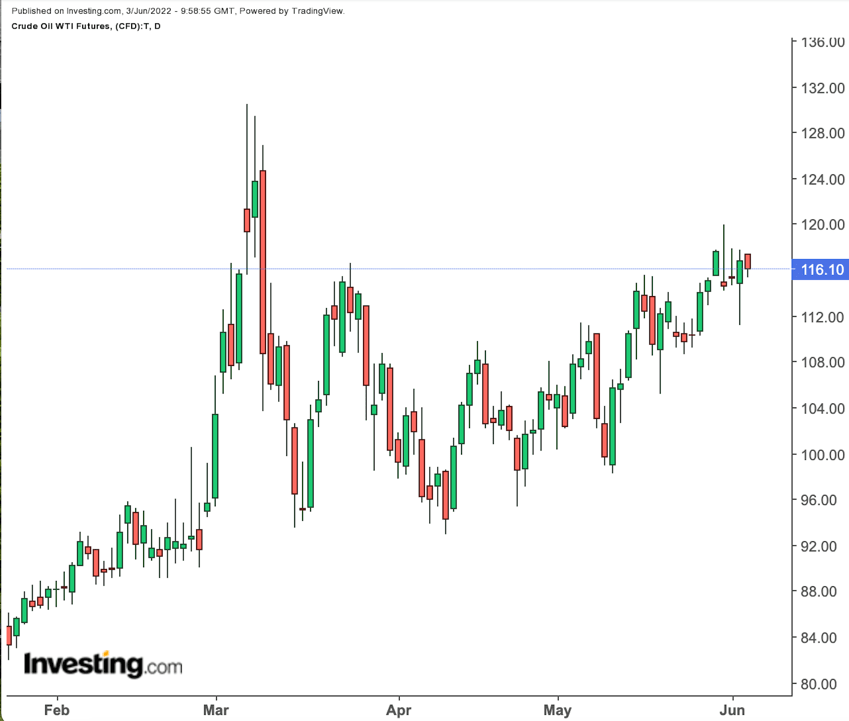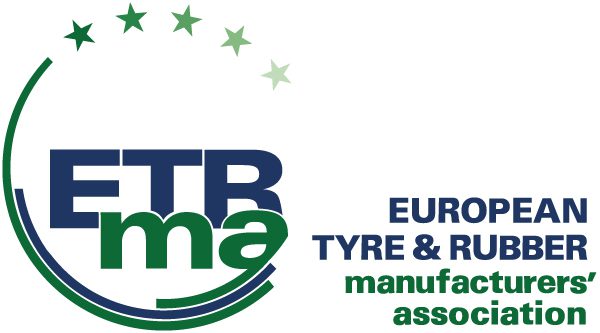You know the saying: Quid pro quo.
OPEC’s bigger-than-usual production pledge for July and August is being fashioned as a gambit by Saudi Arabia to pave the path for an ice-breaking visit to Riyadh by President Joseph Biden.
The US president’s popularity is languishing ahead of November’s midterm elections as prices of fuel, food and most necessities rocket in the United States amid inflation running at four-decade highs.
 Oil Daily
Oil Daily
Of the 23 countries that belong or are associated with the Organization of the Petroleum Exporting Countries (OPEC), only Saudi Arabia—and, to an extent, the United Arab Emirates—can provide the US immediately with what it needs for its inflation problem: More oil.
But Biden hasn’t got that oil yet because he has refused all this while to deal with Mohammed bin Salman, the Saudi crown prince popularly known as MbS, whom the CIA has accused of ordering the murder of a US resident.
Aside from the recognition and respect that should be accorded to him as Saudi Arabia’s king-in-waiting, MbS also wants more emphatic US support for Riyadh in the Yemen war. Both the crown prince and his counterpart in the United Arab Emirates, Mohammed bin Zayed Al Nahyan, have been frustrated with Biden’s indifference toward them, as well as his failure to address Gulf concerns about Iran’s missile program and its regional proxies.
From “Pariah” to Leader: Biden’s Spin on MbS
Now appears to be a chance to mend fences. The White House moved quickly on Thursday to do this, recognizing MbS’ role in extending a ceasefire in Yemen. “We specifically recognize the leadership of King Salman and the crown prince of Saudi Arabia in helping consolidate the truce,” White House press secretary Karine Jean-Pierre said.
Just 24 hours earlier, the administration said Biden still regarded the crown prince as a “pariah” for his alleged role in the 2018 killing and dismembering in Turkey of Washington Post journalist Jamal Khashoggi, a Saudi-native-turned-US resident.
US diplomats had apparently worked for weeks on organizing Biden’s first visit to Riyadh after two years of strained relations over the Khashoggi slaying and disagreements over human rights, the war in Yemen, and US weapons supplies to the kingdom. Just three months ago, MbS had reportedly refused to even speak on the phone with the president.
Keeping up with its charm offensive, the White House said on Thursday it also recognized the Saudi role in achieving the OPEC consensus on higher oil exports.
Which brings us exactly to what Biden is after.
Will The US Charm Offensive Work With The Saudis?
The OPEC+ meeting agreed on Thursday to produce 648,000 barrels per day for both July and August.
OPEC+ groups the original 13 members of the Saudi-led OPEC with 10 non-OPEC oil producers steered by Russia.
For almost two years now, OPEC+ has ensured that the countries in the alliance provided less crude than needed by the market in order to maintain optimum prices for a barrel, after the market disaster spawned by COVID in 2020.
Until June, OPEC+ had announced standard 432,000 barrels-per-day increments month after month—despite repeated pleas for more oil from the US, China, and India as sanctions imposed on Russia over the Ukraine war disenfranchised at least a million barrels daily from the market.
To add to the injury, OPEC+ has shipped less than its target month after month, with various members citing capacity constraints from underinvestment made on oil fields during the pandemic.
According to an informed source who spoke to Reuters, Washington wanted clarity on OPEC+’s output plans before Biden’s visit to Riyadh for a summit with Gulf Arab leaders, including MbS.
Thursday’s announcement was thus seen as the first sign of willingness by Saudi Arabia and others on OPEC+ to open their spigots more freely, especially after the European Union announced this week a ban of most Russian oil products that could alienate at least another 2 million barrels per day of supply.
The question, however, is whether Biden will get what he wants from the Saudis and OPEC+.
Just like the proof of the pudding is in the eating, the fight against inflation is about whether prices can be brought down.
On that front, oil prices barely budged after the OPEC+ announcement on Thursday. They dipped just slightly in Friday’s Asian session, with global benchmark Brent hovering above $117 a barrel while US crude bobbed at around $116.
Worse is the sticker shock at US fuel pumps. The average price of gasoline hit all-time highs near $4.72 a gallon this week, up from $3.04 a year ago. Diesel averaged $5.56 a gallon, up from $3.19 a year ago.
Biden has tried to show a greater connection with the dismay of Americans over fuel prices and other forms of inflation as his Democratic Party heads for midterm elections in November. People have been getting increasingly disillusioned with his administration’s inability thus to control prices from making a bigger dent on their earnings each month.
Even so, there might be good reason why OPEC+’s new production deal might not bring prices of crude oil or US fuel down easily.
Analysts pointed out that OPEC+’s increment of 648,000 barrels per day for July and August would be divided proportionally across the group’s existing members and collaborators.
The problem: Included in the pact was Russia, which has already lost one million barrels in daily production due to sanctions, and countries such as Angola and Nigeria that have repeatedly failed to meet prescribed output targets.
Amrita Sen, co-founder of the Energy Aspects consultancy in London, said the real production boost over July-August would amount to around 560,000 barrels daily compared to the scheduled 1.3 million—because most in OPEC+ have already maxed out their production.
“These volumes will barely make a dent to the deficit in the market,” she said in comments carried by Reuters.
Stephen Innes, managing partner at Singapore-based SPI Asset Management, concurred:
“To put it another way, traders think the incremental increase is too small relative to the growing downside supply risks from the EU embargo [on Russia] amid an expected increased demand from China.”
Analysts at ANZ Research added:
“The fact that Russia was left in the group suggests that production from the alliance will continue to struggle to meet even this modest increase in quota rises.”
John Kilduff, founding partner at New York energy hedge fund, has an equally interesting take on why Russia is still in the OPEC+ deal and what the Saudis really want.
“They want to preserve OPEC+, that’s what,” Kilduff said.
He added:
“The Saudi-Russia collaboration on oil production has gone on for more than five years now and has endured at least two oil price busts, including the 2020 COVID crash that began with their very public fighting over strategy and very public make-up later that fostered the strong partnership they have till today. Despite all of the West opposing Russia over Ukraine, the Saudis refused to let their ally down, saying OPEC will stay apolitical with its exports. The Saudis know that oil prices will not stay as good as this forever; and if you need to slash production again, it’s easier done when all your allies are with you. And Russia is that one ally the Saudis are always going to need.”
Quid Pro Quo
So, does this mean MbS gets what he wants and Biden gets nothing?
Yes and no.
The Saudis want to get the best price for their black gold; not slay the goose that delivers the gold. Therein explains their desire to keep prices at just around $100 a barrel instead of letting them go to $150, and spark a possible crash of both the US and global economies.
“It certainly isn’t in OPEC’s interests to send the world into a recession,” Jeffrey Halley, who oversees Asia-Pacific research for online trading platform OANDA, said, adding:
“It’s amazing how US gasoline prices and midterm elections focus the mind.”
Ideally, Biden and the Democrats could be seeking a gasoline price of between $3.80 and $3.50 a gallon by the time the November polls come around. To achieve that, crude may have to go as low as $90-$95 a barrel.
With a leg in the door after his Riyadh visit, the president could continue pushing the Saudi crown prince and the Emiratis to do more with their own production within OPEC+.
The Saudis say they are working on boosting their nameplate capacity to 13.4 million barrels daily by 2027, from a current capacity of 12.4 million. Riyadh’s present production is 10.5 million barrels daily and it has rarely tested sustained production levels above 11 million a day.
The Emiratis, meanwhile, have less than 2 million barrels daily of spare capacity left.
Regardless of whether he gets what he wants, no one is expecting Biden to cozy up to MbS the way his predecessor Donald Trump did.
“It’s also totally up to MbS on how far he wants to go with the president,” Kilduff said.
He added:
“The Saudis’ relationship with Biden is not great and will never likely be. But if MbS thinks he wants to screw the US after getting its president to kow-tow to him, then he should expect payback over Yemen and face other irritants too. Biden could also, ultimately, do a nuclear deal with Iran and put their oil back on the market without sanctions. The Saudis are still hoping that deal won’t happen.”
Quid pro quo, right?
Disclaimer: Barani Krishnan uses a range of views outside his own to bring diversity to his analysis of any market. For neutrality, he sometimes presents contrarian views and market variables. He does not hold positions in the commodities and securities he writes about.
Source: Investing.com




























